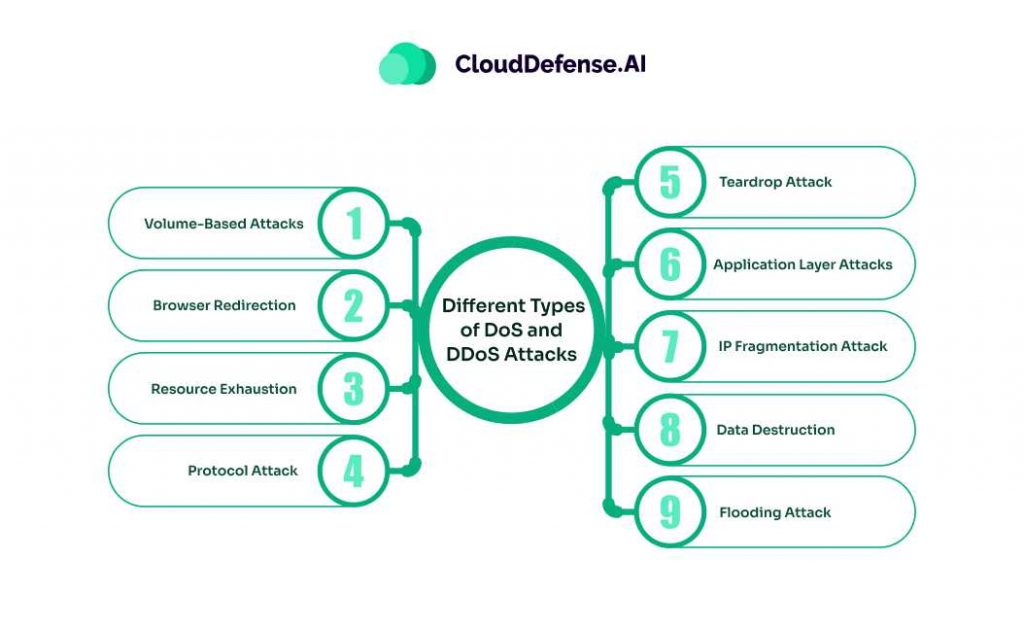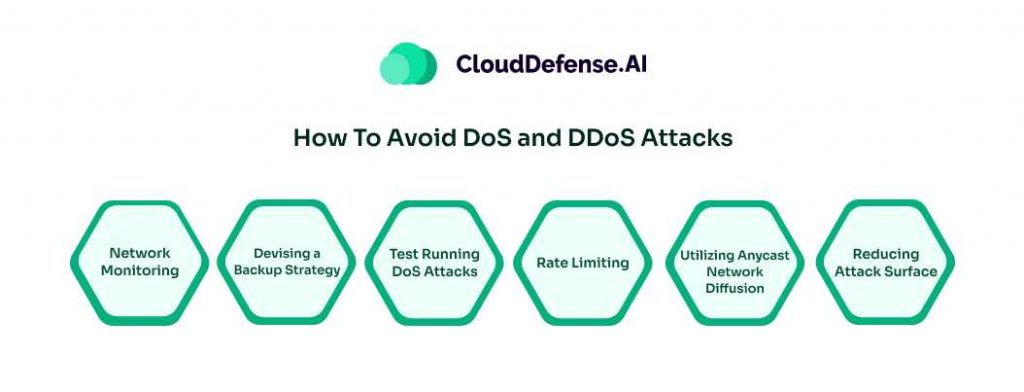Denial of service (DOS) attacks and distributed denial of service (DDoS) attacks are two well-known cyber attacks that have been wreaking havoc on organizations for decades. It may not be new to cybersecurity teams but it doesn’t mean it has any less impact on an organization.
Even today, attackers leverage this tried and tested cyberattack to paralyze any system for a substantial amount of time. Importantly, both these attacks can impact any network or application and make them unavailable to users.
Even though they have similar kinds of impact, they are quite different from each other in the way they attack. It is vital for organizations to understand the comparison of DoS attacks vs DDoS attacks and build cybersecurity strategies accordingly.
Without further ado, let’s dive right in!
What is a DoS Attack?
DoS or denial of service attack is a cyberattack that is usually carried out to disrupt the working or degrade the performance of a server or machine. In this attack, the attacker floods the target server or machine with a large number of requests to share the resource.
As a result, it reduces the resource availability and causes the server or machine to slow down. In most cases, the attackers target a specific server, website, or machine and bombard it with hundreds of false data packets or IP addresses. Due to the abnormal number of requests, the end user is unable to visit the site using the server or process any basic tasks.
The attacker doesn’t carry DoS attacks to conquer the server, rather they do it for extortion or to make a statement. A DoS attack causes serious downtime in a server or machine, leading to financial losses and reputational damage.
In general, an attacker utilizes different types of DoS attacks which include browser redirection, resource exhaustion, data destruction, and closing connection.
What is a DDoS Attack?
A distributed denial of service or DDoS is a serious cyberattack that bears numerous similarities to a DoS attack. However, the main goal of a DDoS attack is to completely hinder the operation of a server or shut down a machine.
It is usually done by using multiple infected hosts and flooding the target device or service with a humongous number of TCP/UDP requests at the same time. A DDoS attack is often utilized to carry out coordinated attacks on different servers at the same time.
It is more deadlier than a DoS attack because numerous malicious hosts- called botnets or zombies are utilized to launch the attack from different locations. All the botnets are controlled by an attacker from a remote device and this masks the identity, making it difficult for anyone to trace them.
Like DoS attackers, DDoS cybercriminals also exploit the same vulnerability but the request from multiple sources amplifies the damage. In some modern attacks, a botnet often uses more than thousands of infected machines, causing the target servers to completely cripple down. Nowadays, the evolution of IoT devices has amplified the impact of DDoS attacks.
What is the Difference Between a DoS Attack and a DDoS Attack?
Both DoS attacks and DDoS attacks may seem similar. It is utilized by cyber attackers to overwhelm target server/s with requests and cripple it to make it unavailable for users. However, the similarity between these two attacks ends there.
A DoS attack utilizes a single malicious host to flood a server with multiple requests whereas a DDoS attack uses multiple botnets to overwhelm targeted servers. The primary difference between a DoS and a DDoS attack is that a DoS attack is a system-to-system attack while the latter uses multiple systems to attack a target server.
Even though on both occasions, the attackers mask their location using a remote system, DDoS attacks are more difficult to detect. This is because the attack originates from multiple locations. Another area where DoS attacks differ from DDoS attacks is the volume of TCP/UDP requests leveraged by the latter.
Moreover, DDoS attacks are carried out using botnets while DoS attacks make use of DoS tools or scripts. Since DDoS attacks use multiple systems, it is much quicker to execute than DoS attacks and make them difficult to detect.
A Detailed Comparison Table of DoS Attack and DDoS Attack
To give you better clarity about the comparison of DoS attack vs DDoS attack, we have come up with a detailed comparison table. Here we will differentiate between DoS attack and DDoS attack in various aspects:
| Aspect | DoS Attack | DDoS Attack |
| Attack Process | In DoS attacks, the cyber attacker floods the target network with a large number of malicious traffic from a single source. | In DDoS attacks, the attacker sends thousands of TCP/UDP requests to targeted networks from multiple sources. Sometimes coordinated attacks are done on multiple networks. |
| Attack Source | The attack originates from one system or IP address. | The attack is coordinated from multiple sources serving as botnets. These botnets are mostly infected IPs and devices. |
| Primary Focus | The main focus is to disrupt a service, make a statement, or make way for other attacks. | The primary focus is to completely cripple a website, facility or service. It is often carried out for ransom. |
| Speed | DoS attack has a slower deployment time as the attacker only uses a single source. | DDoS attacks are deployed quickly on targeted devices as multiple botnets are utilized. |
| Complexity | It is a less complex attack and easier to identify. | It is a highly complex attack as the attack is coordinated from multiple sources. Thus, it is quite difficult to identify. |
| Mitigation Process | DoS attacks are easier to detect and mitigate with simple cybersecurity tools. | DDoS attacks are quite challenging to mitigate. Not all tools can narrow down the primary source due to the use of numerous botnets. |
| Impact of Attack | The impact of a DoS attack is quite limited and only disrupts a network or device for a limited period. | A DDoS attack has a severe impact on the targeted server or device, leading to halting operations. |
| Execution Manner | The attacker makes use of a script or DoS tool to launch the attack from a single system or IP. | A DDoS attack is launched using multiple infected hosts. All the botnets are managed by the command-and-control server operated remotely. |
| Common Methodology Used | ICMP flood or TCP SYN flood are mostly utilized for DoS attacks. | Botnets or traffic amplification are preferred by attackers for DDoS attacks. |
| Usual Targets | Attackers usually target individual servers, small websites, or networks of small-scale organizations using DoS attacks. | Major e-commerce sites, government facilities, large networks, and important online services are targeted with DDoS attacks. |
| Protection Measures | The best way to defend it is by rate limiting or by blocking malicious IP addresses. | The organization needs to implement advanced firewalls and intrusion prevention systems and traffic analysis. |
| Resource Needed | Any attacker with minimal resources can launch a DoS attack. | It requires multiple resources in the form of botnets. |
Different Types of DoS and DDoS Attacks

DoS and DDoS attacks are not restricted to one type and these attacks take many forms to target particular areas within a system. Different types of attacks are carried out for different purposes. Here are some common types of DoS and DDoS attacks utilized by cybercriminals:
Volume-Based Attacks
It is the most common type of DDoS attack which is mostly utilized to cripple the bandwidth resource of an organization. The attacker usually affects the network with a UDP flood attack or floods the bandwidth with ICMP echo requests.
The attacker mostly uses a large number of botnets to send a humongous amount of requests to the network. Thus, the network slows down or stops, preventing users or devices from using them.
Browser Redirection
Browser redirection serves as a popular form of DoS attack where the attacker redirects the end user of the target website to a different one. Usually, DoS attacks are targeted to redirect users to a malicious website for malware attacks.
Resource Exhaustion
This type of DoS attack is often carried out by attackers to exhaust all the resources of a server. Thus, when an end user tries to access the servers, they are unable to connect to it.
Protocol Attack
Another serious form is a protocol attack. It basically exploits the vulnerabilities between the OSI model and the protocol’s connection. This type of attack is targeted towards OSI’s layers 3 and 4 which manage data routing across networks and control end-to-end connection.
In the protocol section, this attack usually exploits ICMP, UDP, and TCP. In many cases, the attackers often attack the handshake process between the web server and protocol.
Teardrop Attack
A popular DoS attack type utilized by attackers is a teardrop attack where the cybercriminal sends thousands of IP data fragments to the network. Due to the large number of fragments, the networks fail to recompile them into their original packets.
Usually, cybercriminals modify the disassembling process of IP data packets to confuse the targeted system and make it difficult for them to reassemble it into the original packets.
Application Layer Attacks
Application layer attack is a popular DDoS attack type carried out to impact the OSI’s layer 7 which is tasked with managing the system’s application. To impact layer 7, the attacker sends an overwhelming number of partial data packets to the application, making it incapable of processing them.
When the application gets flooded by a large number of requests that it can’t resolve, it fails to create a new legitimate connection. This is a severe DDoS attack type which is extremely tricky to detect as the attacker uses minimal bandwidth to send the data packets. Moreover, in most cases, the attacker doesn’t use any bots to attack the application layer.
IP Fragmentation Attack
IP fragmentation attack is done by making changes to the size of the IP packets so that the receiving server can’t assemble them. As a result, it can extract the data from the packet. When the system tries to leverage all resources for repackaging the fragmented IP data packets, the whole system comes to a halt.
Data Destruction
It is a common DoS attack that is mostly launched by attackers to delete shared resources in the targeted server.
Flooding Attack
A flooding attack is another common DoS attack used by attackers. In this attack, they send a multiple number of connection requests to the targeted server but don’t respond to any of them.
As a result, the handshake can’t be completed. Usually, the attacker sends a request as a client for connecting to the server but when the server tries to verify the connection requests, it doesn’t respond.
How To Avoid DoS and DDoS Attacks

DoS and DDoS may be an old attack methodology utilized by attackers but they still have a major impact on an organization. However, with proper prevention techniques, they can be avoided. Here are some prevention methods your organization can employ:
Network Monitoring
Before launching a DoS or DDoS attack, usually attackers test the network to plan their attack strategy. When an attacker tests the network there is a huge increase in network traffic.
By implementing an efficient network monitoring tool, you can regularly monitor the network and identify the attack. Continuous network monitoring can block all the malicious IP addresses before they can flood the network with TCP/UDP requests.
Devising a Backup Strategy
One of the great ways to minimize the damage of DoS or DDoS attacks is by devising a backup strategy.
In the event of a DoS or DDoS attack on your network, your team can utilize the backup system to carry on with the business operation without much setback. Having a backup strategy will help you prevent downtime and loss of reputation.
Test Running DoS Attacks
Testing running a simulated DoS attack can help your organization understand the current security posture and how they are effective against a DoS attack.
It will help you find out the vulnerabilities that the attacker can utilize to launch a DoS attack. Depending upon the test run, you can build your guardrail to prevent DoS attacks.
Rate Limiting
Rate limiting is a highly effective process that when implemented on a network will limit the movement of the high volume of network traffic within a specific time.
It is highly useful in preventing the servers and network from getting affected by a large number of requests from specific IP addresses. Rate limiting also comes useful in preventing DDoS attacks by preventing botnets from flooding networks or endpoints with numerous requests.
Utilizing Anycast Network Diffusion
Your organization also utilizes Anycast Network to expand the network of your organization. It increases the ability of the network to handle a huge volume of traffic at once by distributing it across the distributed server. Thus, it helps in preventing a network slowdown and ensures end users can access without any issues.
Reducing Attack Surface
Another way to prevent DoS and DDoS attacks is by reducing the attack surface. Restricting traffic to specific locations, using a load balancer, blocking requests from flagged IP addresses and other methods can be used to reduce attack surface. Reducing attack surface is highly useful in curbing the effect of DoS and DDoS attacks.
Final Words
DoS and DDoS attacks are two severe cyberattacks that have been affecting the industry for decades. The attackers are evolving their attack process with time and the advancement of technologies. It is important for your organization not only to understand DoS and DDoS attacks but also to understand the comparison of DoS attacks vs DDoS attacks.
This guide will navigate you through different aspects of DoS and DDoS and help you understand how they differ from each other. We have also put forward many other details that will help you between two cyberattacks and how you can prevent them.







